For as much as I’ve written about pine care, I haven’t said much about cutback. Cutback can be tricky as there are many reasons to remove or not remove branches in given situations. Different teachers approach the topic differently, and often multiple approaches can yield good results.
Ignoring any complexity for the time being, I’ll start with the most basic of principles – cut back to two buds. After decandling, pines can produce any number of summer shoots. Left unchecked, these clusters of branches can cause swelling and make basic pad development challenging. The most simple approach to pad development is to leave no more than two shoots at the end of every branch. Although the photos below show red pine shoots, the technique applies equally to black pines.
When we find more than two shoots at the end of a branch, something has to go. Which shoot to cut? It depends. Shoot position and vigor are the most common criteria used to make a selection. When all shoots on a given branch have similar vigor, I tend to make my selection based on shoot direction. In the photo below, one shoot grows up, the other two shoots grow to the sides. In this case, I’ll remove the center shoot.

Three shoots of equal vigor
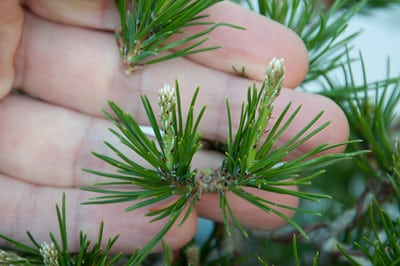
After removing the center shoot
Upward growing shoots often have much more vigor than lateral or downward-facing shoots. For this reason, I’ll often remove the upward facing shoot.
The converse is also true – downward facing shoots tend to have less vigor. As the two lateral shoots in the photo below have equal vigor, the selection is simple – remove the downward facing shoot.
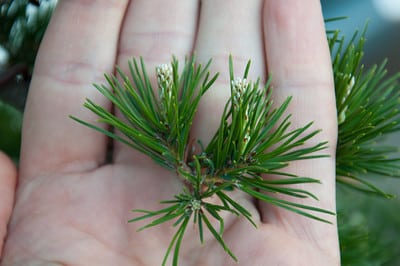
The downward facing shoot will continue to get weaker as the shoots above will shade it out

After removing the downward facing shoot
Sometimes the shoots don’t line up the way I’d like. In the photo below, the upward and downward facing shoots are relatively strong, but the lateral shoot is weak. In this case, I’ll remove the weak lateral shoot to maintain equal vigor among the remaining shoots.
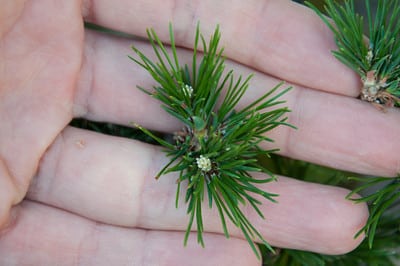
The lateral shoot is weak
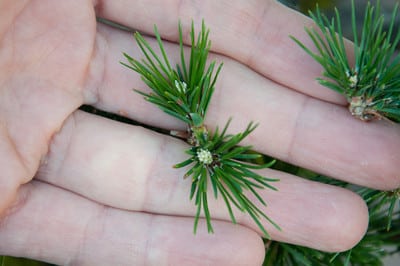
After removing the lateral shoot
In time, the upward growing shoot will tend to grow stronger than the downward facing shoot. I can prevent this by wiring the branch and twisting it until the shoots are side by side.
Occasionally I’ve seen strong strong shoots growing downward. As the two lateral shoots are of equal vigor, I removed the odd man out.
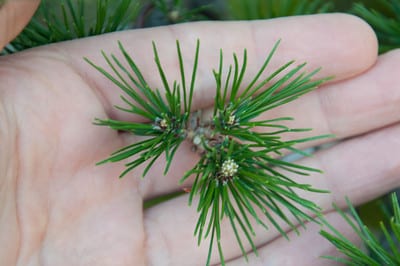
Strong downward facing shoot

Lateral shoots have equal vigor
In small clusters of equal vigor shoots, I’ll often remove the shoot that leaves the most space between the remaining shoots, though I don’t know that any one selection in these cases is preferable to any other.
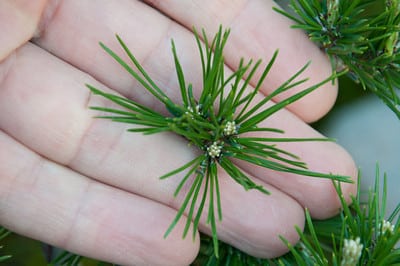
Three small shoots
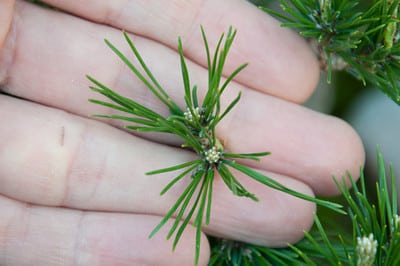
After cutting to two
Here’s a fun case – very strong vertical shoots and relatively weak lateral shoots. Which to keep?
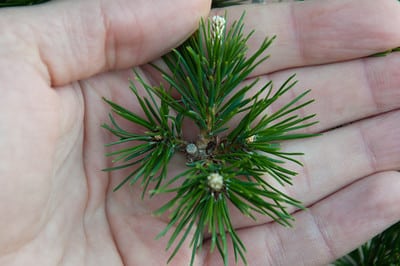
Vertical shoots are strong, lateral shoots are weak
If this branch was near the apex or an equally vigorous zone, I’d want to decrease the vigor of the branch and leave the smaller shoots. If the branch was in a weak zone, I’d keep the stronger shoots. As this branch was at the very top of the tree, I removed the stronger shoots.

The top shoots go
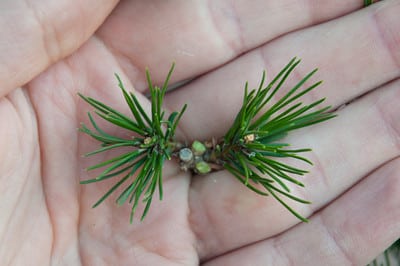
Nicely balanced lateral shoots remain
And what about whorls of many shoots? Easy, cut to your favorite two.
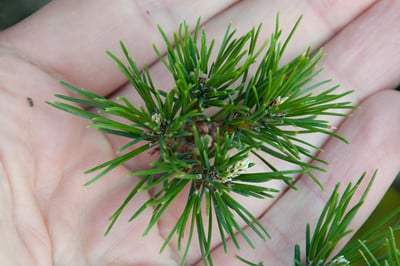
Many shoots
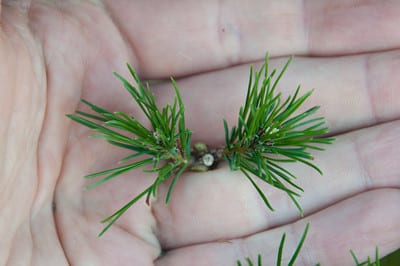
After cutting back to two
Subscribe to Bonsai Tonight
New Posts Delivered Every Tuesday and Friday
Mac says
Thank you again Jonas. Well written and illustrated. Thank you for your time and efforts and wiliness to share your knowledge.
John Demaegd says
Good Info, thanks. I’m about to embark on a black pine project so any and all info is appreciated.
Keith says
Do you think it would ever be beneficial to leave the small downward shoot if the two main selected shoots are excessively strong?
Also, are these photos from last fall or are you doing the shoot selection currently?
Keep up the great posts, it’s rare to see detailed development pics with explanations… especially for pines.
Jonas Dupuich says
Hi – Keith, I’d likely remove the weak shoot and keep the strong two – these can be addressed during decandling by removing them later in the season. Another way to decrease vigor here is to remove additional needles. The photos happen to be from yesterday as I haven’t had time to get to it earlier! Any time from fall up until the new candles move is ideal – I’m a bit on the late side.
Mac says
Keith, Good question about letting a third shoot use up some of the energy. Hope Jonas comes back with answers to your questions.
weetreestudio says
Very helpful, thanks.
Brian says
Hi Jonas
A little off topic, but her goes. How do you scarifying oak seeds. I am currently in Japan and have come across a small leaf varity along with some seeds.
Thanking you
Qualicum Brian
Jonas Dupuich says
Hi Brian – It may depend on the variety. The best resource I know of is http://treeshrubseeds.com/ – I’ll be curious to hear if others have good ideas.
Steve Moore says
Thanks for the insights!
Mac says
Three years ago I grabbed some acorns off an interesting oak that I saw at a interstate rest area. Got 8 of them. They ended up staying in a paper bag in the wayback of the car for a year. Last spring I took a pocket knife and just cut through the husk from point to crown on them. Just enough pressure to cut through the shell. Planted them and 6 grew and are now starting their second year.
All you need to do is just give the shell a weak area so the sprout as it enlarges can easily shove the thing open. In the ground the shell gets softer and it opens quite easy.
ravenspen says
Very well written thanks for sharing. I was thinking since your article was so on topic with what I have been wondering. See on our property we have a ton of baby pine trees. I know that is probably not the right word but what I was wondering is could you turn those into bonsai trees? They are no bigger than 3 to 4 inches high but they are regular pines. Any help would be great thank you.
Jonas Dupuich says
Hi Ravenspen – If you have tons of baby pines on the property, I see no reason not to experiment and give them a try. How you treat the seedlings over time can depend on the variety, but getting them in a pot and seeing what happens is a good place to start.
ravenspen says
Thank you for taking the time to get back to me. I will pick a seedling and give it a go .^_^ and I will remember they are called seedlings. Tell you how it goes.